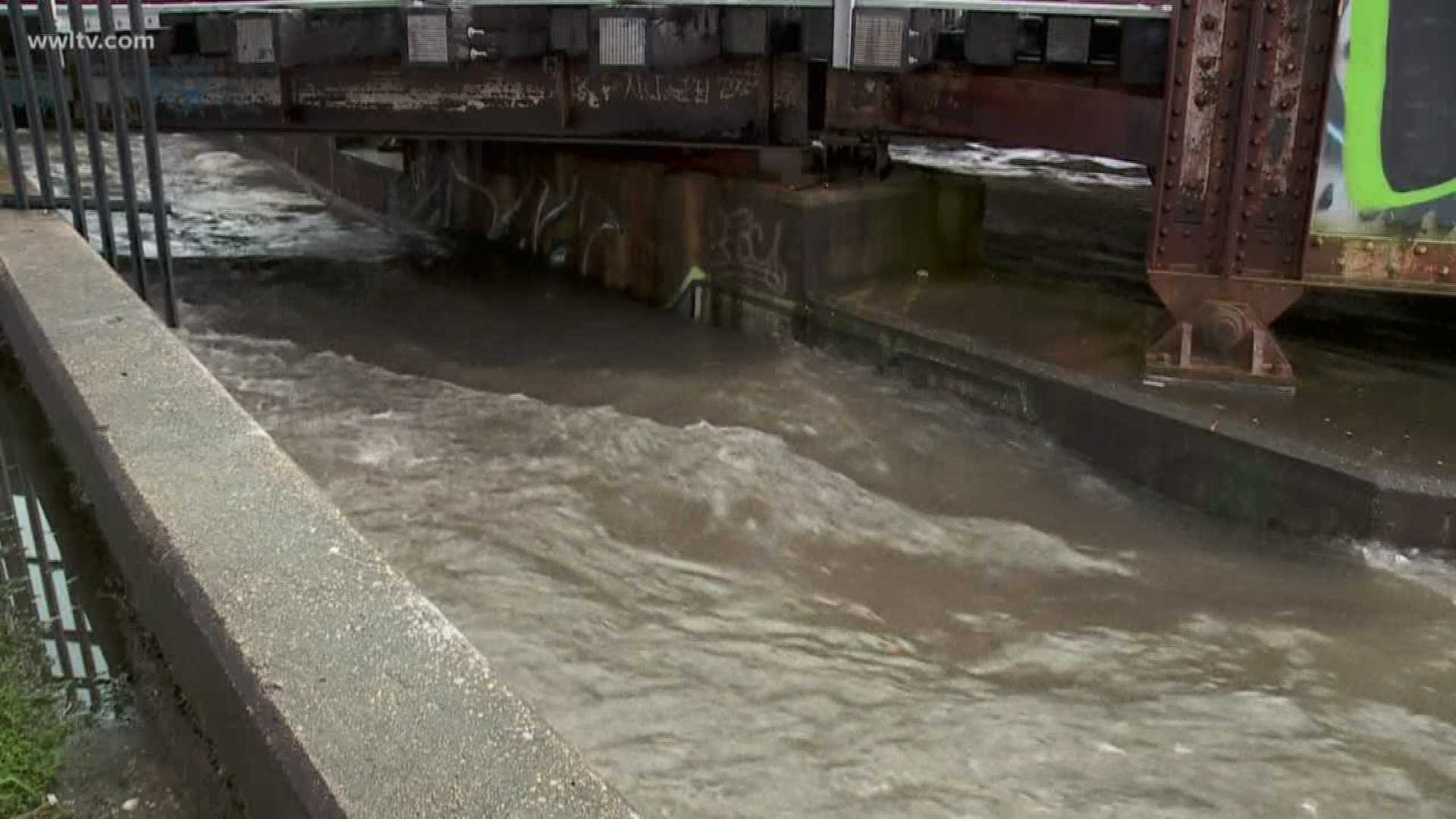NEW ORLEANS — Contrary to neighbors' fears, the massive culverts installed under major thoroughfares Uptown improved drainage during severe flooding in May, July and August, according to a study released Friday by the Sewerage & Water Board.
The third-party study from longtime S&WB consultant Ardurra Group used computer models to estimate flooding from July 10, compared it to how the same intensity of rainfall would have affected the city without the so-called SELA box culverts and determined they worked as designed, the agency's leaders said Friday.
"We believe this report validates the intent of the SELA projects and it’s performing as it’s designed," S&WB Executive Director Ghassan Korban said.
But the Ardurra report also concluded that an especially intense, 1-in-100-year rain event on July 10 simply overwhelmed those SELA culverts, even with their increased capacity to store and move water off city streets.
"The system that’s designed for a 10-year storm will be inundated at one point, and that’s why you have the flooding that you see," Korban said.
Asked if they determined that the culverts were truly filled to capacity, S&WB Superintendent Bob Turner said: "I will tell you this. I believe it was pretty close."
Severe flooding on May 12, July 10 and Aug. 26 left homes, cars and businesses inundated, essentially shut down the city and spurred the S&WB to launch an investigation into what it admitted were extreme drainage issues.
After the flooding on July 10 in particular, a growing question was whether the SELA culverts, started by the Army Corps of Engineers using mostly federal money in 2013 and finished earlier this year, might actually be making flooding worse.
Those new culverts were designed to store significantly more water than the smaller box canals that had been there before, and they could also move storm water to the city's pumping stations faster.
SEE: They live right next to the brand new SELA project and their house has flooded 3 times since May
As WWL-TV reported, residents in those areas expressed frustration that they suffered through five years of construction, some of which they claim damaged their homes, and yet, as soon as those projects were finished this spring, they said they started getting flooded in their homes for the first time.
Sewerage & Water Board Executive Director Ghassan Korban said he understood those residents’ frustrations. But he said the Ardurra study found the higher intensity of rainfall on those days simply overwhelmed the capacity of the SELA culverts.
The rains on July 10 "...reached a volume and intensity of a storm that had less than a .01 percent chance of happening in any given year," the Ardurra study found. That amount created severe flooding despite the massive culverts underneath Jefferson, Napoleon and Louisiana avenues diverting water properly, the report said.
S&WB General Superintendent Bob Turner said blockages in the city’s catch basins and smaller drainage pipes that feed into the SELA culverts could be to blame, but this study did not look at that part of the system.
That disappointed engineer H.J. Bosworth, who said understanding the role of the city's system of smaller feeder lines is a key to getting the new SELA culverts to work properly.
"I think the parts of the system that are older are causing the backups," he said. "And I think the Sewerage & Water Board needs to investigate and see just how clogged those things are."
Turner says that assessment is still to come.
DOWN THE DRAIN: New Orleans could get loan of up to $111 million for sewers
The man who held Turner's position in 2017, Joe Becker, now works for Ardurra, according to Becker's LinkedIn profile. Former Mayor Mitch Landrieu called for Becker's resignation in August 2017 after he falsely said all of the city's drainage pumps were working on Aug. 5, 2017, when power and pumps repeatedly failed, contributing to widespread flooding.
State law prohibits public agencies like the S&WB from hiring former employees for two years after they leave their public office. The Ardurra report was dated in September, almost exactly two years after Becker's departure from the S&WB. Agency spokeswoman Courtney Barnes said agency leaders weren't aware of Becker working on the SELA impact study project.
Some residents also questioned if the SELA culverts could have made flooding worse in places like Mid-City and Downtown. But the S&WB said that’s impossible. Those areas have separate canal networks that go to different pump stations from the SELA culverts Uptown.
By Aug. 26, there had been at least six days over the past two years that heavy rains inundated different parts of the city following a seemingly routine summer thunderstorm.
DOWN THE DRAIN: Only 2% of debris removed from Lafitte canal so far

